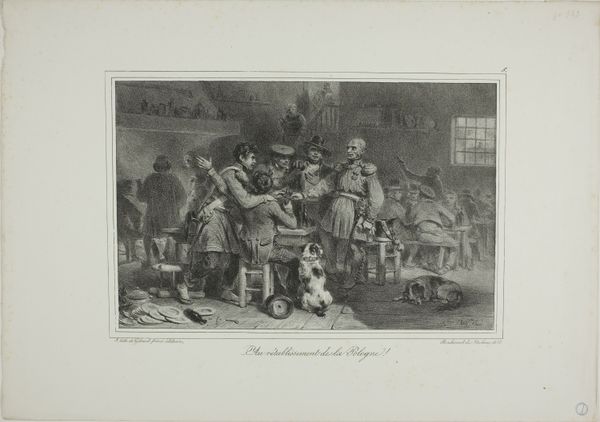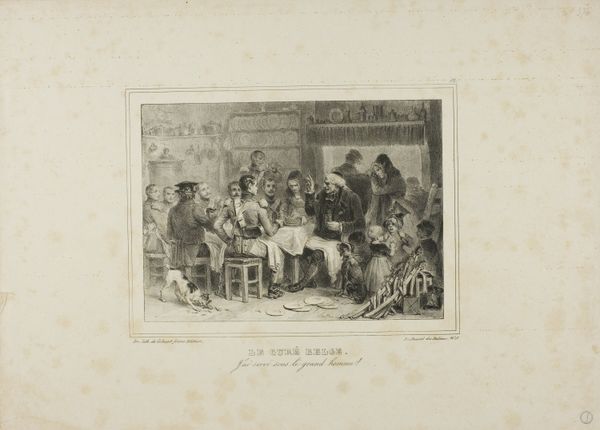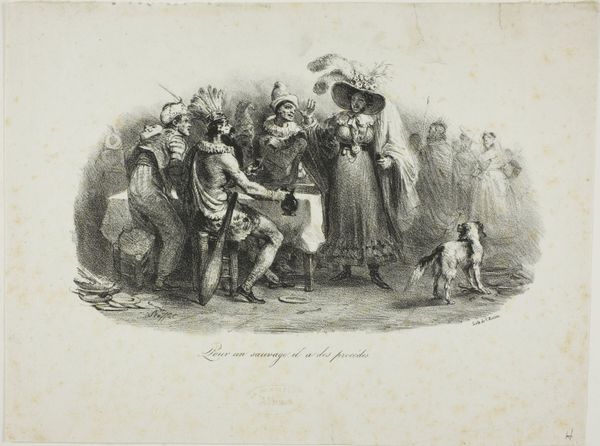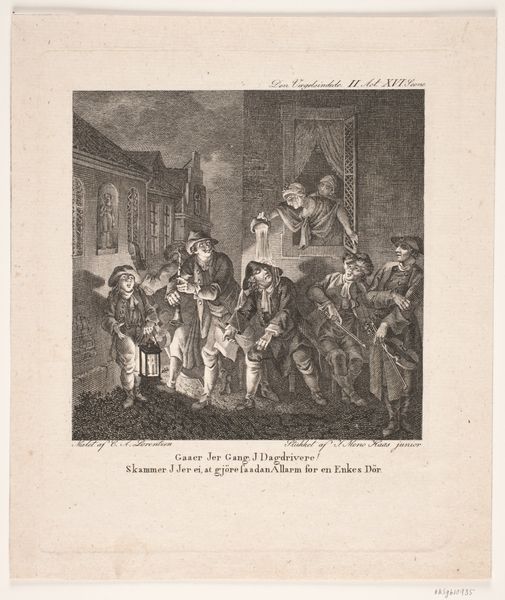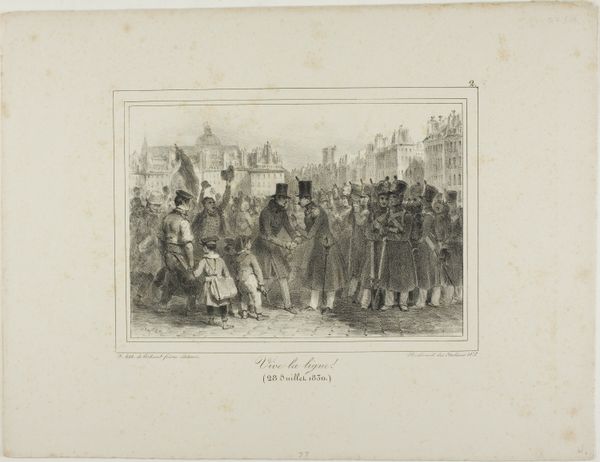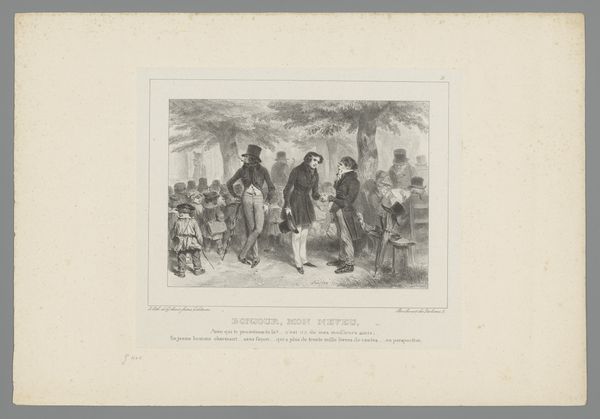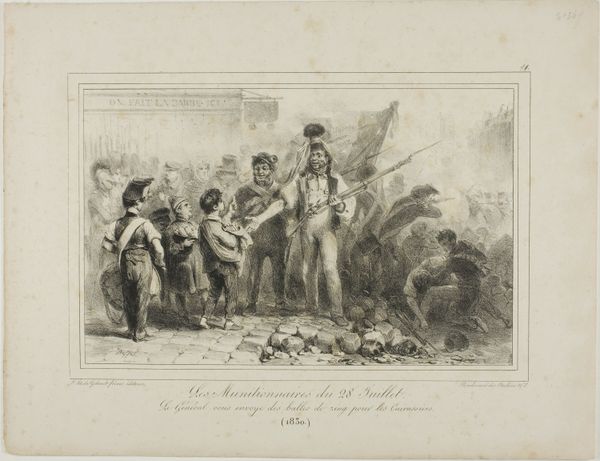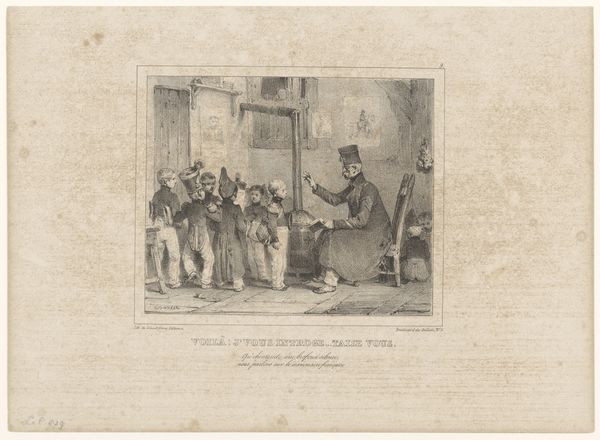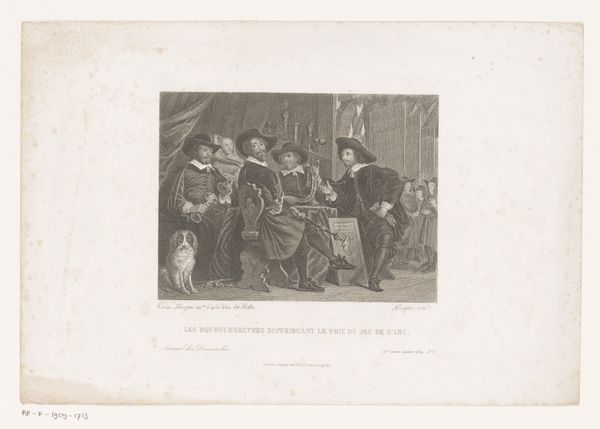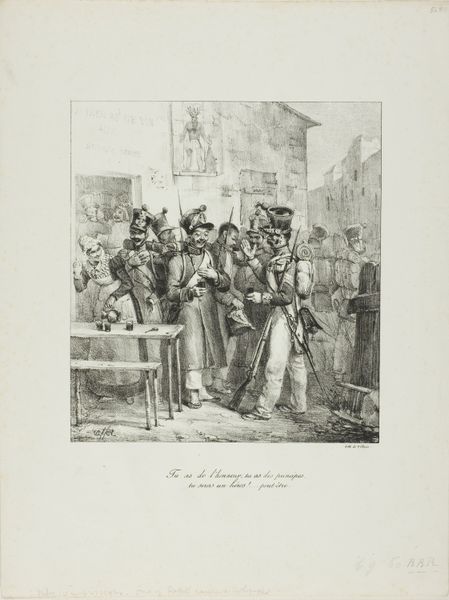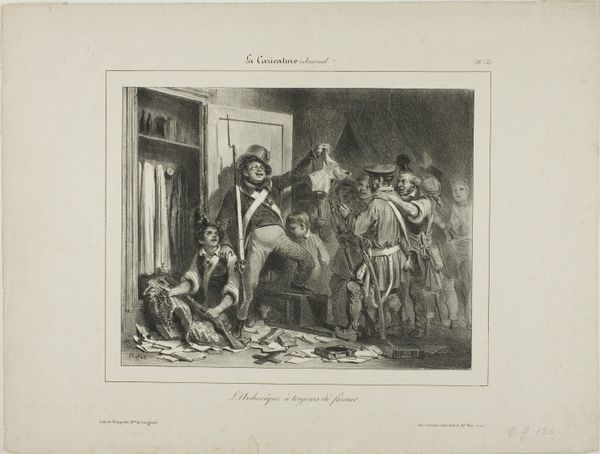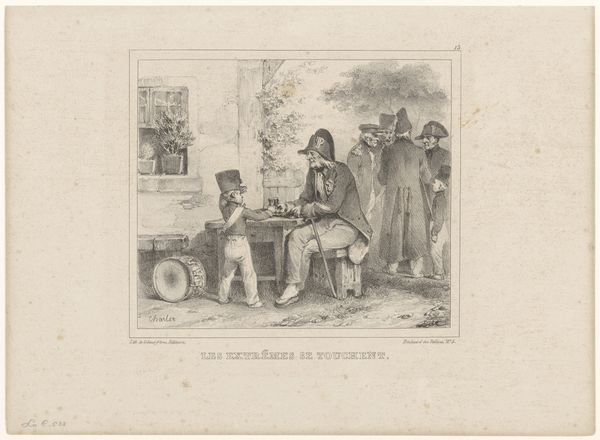
drawing, lithograph, print, paper, ink
#
drawing
#
muted colour palette
#
lithograph
#
ink paper printed
# print
#
paper
#
ink
#
genre-painting
Dimensions: 163 × 237 mm (image); 283 × 396 mm (sheet)
Copyright: Public Domain
Curator: I find this 1832 lithograph, "It's a Pole," by Auguste Raffet rather affecting in its depiction of daily life. Editor: There's a stark contrast here. The palette is quite muted, lending a solemn feel, yet the scene is bustling with life, an almost chaotic energy. What draws your eye first? Curator: Initially, my attention is drawn to the cluster of figures in the center, a focal point cleverly framed by the doorway and the varying heights of the individuals, then, following this nucleus, the perspective guides the eye across the detailed textures and forms arranged. It speaks of compositional mastery, of visual grammar effectively deployed. Editor: Agreed. And, viewed through a socio-historical lens, Raffet provides us a glimpse into a very particular moment of the era: Post-Napoleonic Europe saw displaced people across national borders, shifting and unstable identities. The print raises the question: How are foreigners viewed in their new homes? And, are their welcoming parties as enthusiastic as they seem? Curator: True, yet the formal language offers another reading. The lithographic medium lends itself to a fascinating tonal range. Consider the deployment of chiaroscuro across faces and the interplay between illumination and deep shadow, contributing significantly to the atmosphere of intimate drama, yet, do not get lost to literary sentimentalism; focus also in the intrinsic and tangible language within the piece itself, in its pictorial organization. Editor: Absolutely, these elements enhance its historical weight. Raffet, printing this, would have recognized its appeal for audiences consuming mass media, reinforcing or challenging, existing societal perspectives of Polish expatriates during his era. Curator: Well, in meticulously articulating the structural principles and semiotic density within Raffet's print, its artistic power becomes clearly palpable and effectively conveyed to a contemporary observer. Editor: Examining it this way has certainly deepened my appreciation for how art mirrors, or perhaps molds, the socio-political currents it navigates.
Comments
No comments
Be the first to comment and join the conversation on the ultimate creative platform.
